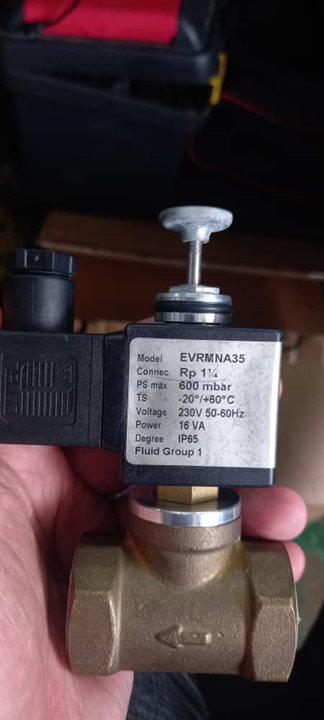When 36W supply to specification 16W solenoid valve normally open, is there is effect to the solenoid valve?
Be sure to click 'more' and select 'suggest as answer'!
If you're the thread creator, be sure to click 'more' then 'Verify as Answer'!
When 36W supply to specification 16W solenoid valve normally open, is there is effect to the solenoid valve?
Solenoids are inductors. There is a holding current (power) and inrush current.
The power supply needs to match the required voltage of the solenoid, provide the holding current, and also stay reasonably stiff to maintain voltage during short inrush current.
It depends on the solenoid inrush current whether the 36w power source has enough power to survive turning on. A capacitor across the power supply can help provide extra energy during the inrush when the solenoid is turned on.
Holding current is actually higher than initial current for a solenoid, since the solenoid appears like an inductor. It's not the same as (say) a DC motor, which will have a higher initial (inrush) current (unless it's stalled).
Inrush current can be three to 10 times higher than holding current and can cause extreme overheating conditions, resulting in coil burnout if it is prolonged. Source: MRO
Not true if DC is applied.
In fact, not _always_ true for AC either; it depends on the AC frequency. Also, did you actually read your linked article?
This makes no sense:
"resulting in coil burnout if it is prolonged" - that's no longer "inrush" when it's prolonged.
The article is a bit misleading since it refers to inrush current when it means current when the solenoid armature is extended out of the coil. It may common to describe it this way but it's not that helpful.
However, it is true that an AC solenoid designed for a fast pull in may well draw a lot of current if mechanically constrained in some way.
Since the OP doesn't say if he is using AC or DC we are all a bit in the dark.
SO, as usual, more info needed please.
Afiq - pictures of the solenoid and the power supply, ideally showing the ratings label, would help !
MK
I hadn't thought to deep about this before, but I must agree with shabaz as a solenoid has no way to create a counter electromotive force - which is what creates the current reduction in motors. There is also no inductive reactance since it's DC. There is probably an instant of subtransient reactance during the initial energization but since there is no frequency, it's theoretical at the speed of electrons level.
We may experiencing one of the challenges in our field - language / terms / nomenclature. Solenoids can be the single coil relay thing or they can be the pull-in coil / holding coil variant. Sometimes the latter solenoids have 3 wires. These may or may not have internal contacts to drop out the pull-in coil. The 2-wire variant will always have contacts to disconnect the pull-in coil at the end of travel for the solenoid. The pull-in coil is used to overcome the Law of Inertia and will definitely burn up if left energized - because it has low resistance. Magnetism in this case is all about Amp-turns with an emphasis on the amps. We get the high impulse to move the armature but we don't need that much energy to keep it centered in the holding coil. The holding coil is also about amp-turns but the emphasis is on the turns; thinner wire, more turns, higher - current limiting - resistance.
SO... solenoids can appear to have inrush - but they don't.
Agree, hard to see how that condition could be defined as inrush, (e.g. it would be called a stalled condition for a DC motor, don't know what one would call it for an AC solenoid!). Also reminds me of an old discussion (with a blog from John Wiltrout from memory) where it was discovered that impedance could be lowered in some conditions (depending on the particular metal, and the AC frequency). Granted it's more likely to be 50/60Hz here.
They do create counter EMF each time they move.
 This is my solenoid valve voltage rating
This is my solenoid valve voltage rating
your valve works with 230V AC, it will not work (to specification, if at all) with a 24V power supply
your valve works with 230V AC, it will not work (to specification, if at all) with a 24V power supply